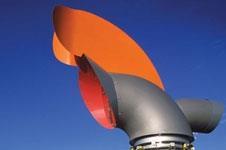Tellytubby Land attracts accusations of fiddling while Rome burns – but some applause for honesty, while Part L draws the thought that "it ain't bust, so don't fix it"
Tellytubby land: BedZed revisited
Tellytubby Land? Cloud Cuckoo Land is more like it! Virtually all the zero carbon crackpot schemes are high initial cost, high in maintenance and require replacing years before payback has been reached, thereby negating the very reason they were established i.e. to reduce energy consumption – essentially they also require the backup of existing electricity and water supplies from the networks in order to function.Meanwhile the world population, currently estimated as 6.7 billion, is projected to be 9 billion by 2040. Talk about fiddling whilst Rome burns!
CP Davison RIBA
It's a shame to hear officially that so many of the ideas employed at Bedzed have not worked as well as intended, if at all. The issues with the CHP system, sunspaces, electric cars and living machine have been known for sometime, but for the weaknesses to be openly discussed by those involved is refreshing and paves the way for us to learn from mistakes and move forward.
What saddens me most is that, as so often has happened with schemes of this nature, the grand claims that were made at the inception of this project have proved to be left wanting in reality and this just adds fuel to the fire of the critics of zero carbon living.
All in all though, hats off to everyone involved for their honesty.
Chris
Historic buildings hit by Part L
When will the BRE learn to understand that it is frequently more cost-effective and carbon-cost-effective to apply the old adage “If it ain't bust, don't fix it”.I have a classic example of old Crittal windows, with maintenance and “excess” fuel costs over the next 25 years £120,000. Cost to replace with new aluminium thermally broken etc £750,000 (excluding consequential works). Embedded carbon in production of new windows huge in comparison to the "excess" carbon lost in burning extra fuel to compensate for the heat loss.
The BRE needs to examine the concept of Cost and Carbon Benefit Analysis and they will find in a majority of cases it is cheaper and more environmentally friendly in the long-run to “let sleeping dogs lie”.
KD Overment
What exemption?? The current Part L only exempts historic buildings where "where compliance with the energy efficiency requirements would unacceptably alter their character or appearance" – otherwise Part L applies. And that is pretty much the same as the consultation document is proposing.
John Neal
Knotty problem: when cladding goes bad
Hilarious. Look at the state of the stuff in those photos. Timber cladding is a godsend to the maintenance industry, but something sensible purchasers should avoid like the plague. Brighton's 'eco' development is layered in the stuff, most of which is ready to drop off before the last buildings are even started. Future maintenance charges will rocket until someone sees sense and replaces it with upvc. You've got to love architects.Vern



























